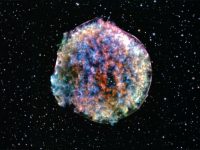
This week the media have extensively covered the publication of an article in Nature Astronomy about the detection of remarkable amounts of phosphine (PH3) gas in the upper layers of Venus’s atmosphere. In those terms, this would not seem particularly newsworthy, were it not for the fact that the authors have toyed with the idea that the origin of this phosphine is biological. Why is that so? Because on Earth there are only two known possible sources capable of generating this gas: industry and some anaerobic bacteria (living in oxygen-starved environments).
Moreover, this region of the Venusian atmosphere is particularly “comfortable” for life as we know it, especially if we compare it with the usual climate conditions on Venus: the dense atmosphere of this planet, composed mainly of carbon dioxide with a strong greenhouse effect, produces temperatures on its surface of more than 450 °C and atmospheric pressures 90 times higher than on Earth. But at 55 km of altitude we find almost ideal conditions, with an atmospheric pressure of half an atmosphere (as a reference, that is the atmospheric pressure at the base camp of Mount Everest) and a temperature of 25 °C. It also has its disadvantages: in this region there are abundant clouds of corrosive sulfuric acid and it is subject to powerful 200 km/h winds.
This is not the first time there has been speculation about Venusian life. Sagan and Morowitz already theorised in 1967 about the possibility of aerial life in the clouds of Venus, a possibility that has been repeatedly investigated until recently by various groups, including the authors of the Nature Astronomy article. There has even been some discussion (with less success) of complex life on the surface of Venus, as we discussed earlier in Mètode Spacecraft. But is phosphine really an indication of life on the neighbouring planet?
One frequent temptation when the origin of a phenomenon is unknown is to use the wildcard hypothesis of life (or even intelligent life) as an alternative explanation. This has happened on numerous occasions in astronomy: the disconcerting (and finally non-existent) canals of Mars led to some people proposing the existence of Martian engineers; one of the first explanations for pulsars’ rhythmic signal was that they were radio beacons from some alien civilisation, which turned out to be an exotic type of dead star; regarding the cosmic explosions known as GRB (or gamma ray bursts) it was even postulated that they might be industrial accidents of some highly advanced civilisation (today it is clear that they are a natural phenomenon); more recently, there has also been speculation of an intelligent origin for FRBs (rapid radio bursts), a phenomenon whose cause is still not entirely clear, and for which an artificial origin has not yet been ruled out (although everything points to the contrary); or the exotic asteroid Oumuamua, coming from beyond our Solar System, whose peculiar behaviour led some to speculate whether it could be a fragment of an interstellar ship; not to forget the media phenomenon KIC8462852, a star whose inexplicable (so far) and spectacular decreases in brightness were tried to be explained… as the result of a Dyson sphere under construction around it.
This does not mean that a biological origin is necessarily a wrong hypothesis for a phenomenon that we have not yet been able to explain. Methane emissions have been detected on Mars and there is a strong debate today about whether their cause is in some type of Martian bacteria; in the absence of volcanism, as is the case on Mars, it is difficult to explain the presence of atmospheric methane on a rocky world without resorting to biology. And it may well be that, in the case of Mars, the correct answer is Martian life. But it may also be that there are other phenomena we don’t know about that are responsible for the Martian methane. In fact, in the Solar System we have another world, Titan, in which methane is so abundant that it even forms seas, and we do not have any good explanation to explain such abundance. Very close to it, the moon Enceladus shows geysers (possibly indicative of hydrothermal sources under its ice cover) in which the presence of methane is also being explored today.
The analogy with Venus case is clear. The fact that we do not know how to generate phosphine without resorting to bacteria or industry does not mean that there are no other possible non-biological sources we still do not know about, as the team responsible for the discovery repeated ad nauseam during the press conference on 14 September. And this is particularly true in such an exotic world as Venus, with so much unstudied chemistry. We know a lot about water-based chemistry, at pressures and temperatures that are comfortable for us, because it is the chemistry that surrounds us; it is easier to research and also more useful. Regarding what types of chemistry, substances, or reactions can occur in a solvent like sulfuric acid, at the extreme pressures and temperatures that exist on Venus, or how the micro-droplets from Venusian clouds react to sunlight (as the authors themselves point out in their article), we actually know very little, for obvious reasons. To answer the question in the title of this article we need more information and better models of the planet’s behaviour. We simply lack data.
It is indeed true that the conclusion that phosphine may be an indication of extraterrestrial life cannot be ruled out – and if I may say so, it is a media hit. But come to think of it, that conclusion is almost as sound as saying that signs of industry have been found on Venus.




